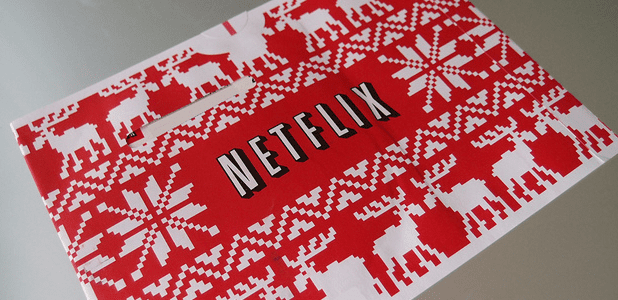There’s a leak in Netflix’s (NFLX: $85/share) moat. The streaming service added just 1.7 million subscribers –including just 160,000 domestically – last quarter. These results came in well below its already weak forecast of 2.5 million new subscribers.
These results reinforce our belief that Netflix no longer has a significant competitive advantage. When it tries to raise prices, as it did for many long-time members this quarter, it loses customers to rivals such as HBO (TWX), Amazon Prime Video (AMZN), and Hulu.
Catch-22 Business Model
Netflix needs to keep adding content if it wants to attract new subscribers, but it has to raise prices to pay for that content, which turns members away.
This problem is only magnified by international expansion. To stay competitive across the globe, Netflix needs content tailored to a wide variety of audiences, which is why it’s now rolling out original series for audiences in countries such as India and France to make up for its sparse international offerings.
Adding all that extra content is incredibly expensive. Through the first six months of 2016, Netflix spent $4.1 billion on new streaming content, up 41% from the year before. Meanwhile, revenues only grew by 26%.
However, Netflix can’t raise prices in many of its new markets where income is not nearly as high as the US. In India, where average income is just over $120/month, consumers will be much more price sensitive than they are in the developed world.
Valuation Is Unsustainable
If Netflix didn’t have such an overpriced stock, it might not be facing such a serious dilemma. The company could commit to a strategy of hitting a massive market and squeaking out razor thin margins, or it could market itself as a premium platform and earn high margins from a smaller customer base that places a high value on its original content.
However, as Figure 1 shows, neither option can produce the level of profitability Netflix needs to justify its valuation over the next decade.
Figure 1: 10-Year Valuation Scenarios For Netflix
Sources: New Constructs, LLC and company filings.
Scenario 1: If we assume Netflix keeps prices steady, has long-term margins that are equivalent to its average over the past three years, and grows subscribers by 21% compounded annually over the next decade, the stock has a fair value of just $24/share today. In this scenario, Netflix grows net operating profit after tax (NOPAT) by 33% compounded annually for 10 years, at which point it would have 520 million subscribers.
Scenario 2: If Netflix raises its price to the level of HBO Now, cuts back its content investment to get its margins back to their high-water point in 2010, and grows subscribers at the much slower rate of 7% compounded annually – more in line with the most recent quarter’s results – the stock has a fair value of just $31/share. In this scenario, Netflix grows NOPAT by 27% compounded annually for 10 years, at which point it would have 152 subscribers.
Only a combination of those two scenarios allows Netflix to justify its present valuation, and we’ve already detailed why that’s not possible. Even after the recent price drop, it would still take 45% NOPAT growth for nine years for Netflix to be worth $85/share, at which point it would have 520 million subscribers, compared with 83 million subscribers after 2Q16.
Other Notes From 2Q16: Don’t Trust Those Numbers!
In addition to the headline subscriber numbers, we saw a number of other items that reinforced previous concerns we’ve had about Netflix.
- Free Cash Flow Continues To Fall: Netflix continues to see massive cash outflows. Through the first six months of 2016 it reported negative $515 million in free cash flow. That number actually understates the amount of cash burned by the company as it ignores stock compensation and proceeds from the sales and maturities of short-term investments. We currently show Netflix at $1.8 billion in negative free cash flow over the trailing twelve months, and that number should get worse once we get the 10-Q for this quarter.
- Reported Expenses Understate Real Cash Payments: Netflix’s reported content costs continue to understate its actual cash payments for new content. Through the first six months of 2016, Netflix recorded $3.4 billion in streaming content costs but paid $4.1 billion to license new content.
- Content Library Keeps Shrinking: With all its investment in original content, and more competition to license older shows and movies, Netflix has less money to spare on fleshing out its library. One recent count has Netflix’s content library shrinking by 40% over the past four years. As its massive library contracts, Netflix has less differentiation from other streaming services.
This article originally published here on July 19, 2016.
Disclosure: David Trainer and Sam McBride receive no compensation to write about any specific stock, sector, style, or theme.
Click here to download a PDF of this report.
Photo Credit: macappsaddict (Flickr)

